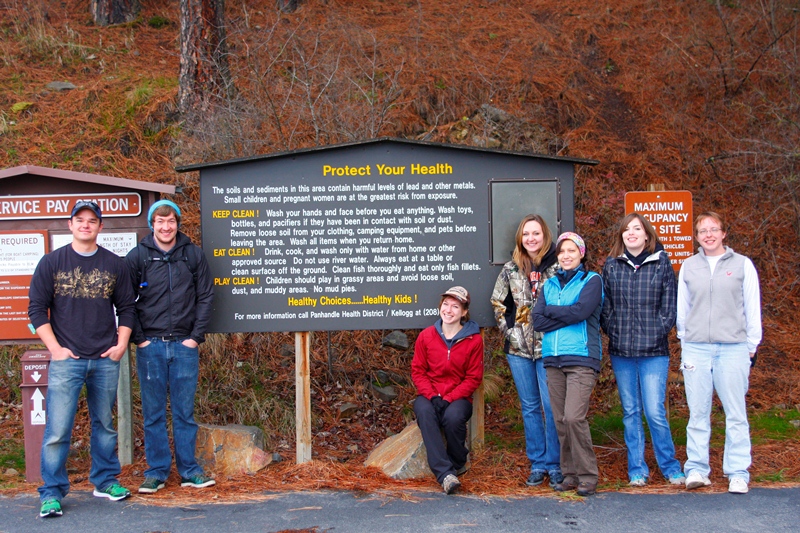My current research program (mostly) explores how alterations in aquatic habitats (pollution, invasive species) affect the physiology and ecology of invertebrates. Our focus on the fitness of aquatic invertebrates builds on our work on the evolutionary genetics of the nematode Caenorhabditis elegans. I love to work with invertebrates because they are readily available, are easy to work with, and have really fascinating physiology!
Invasive species and habitat restoration
Our work exploring the changes in habitat quality that (seemingly) follow the introduction of non-native species is conducted at Turnbull National Wildlife Refuge and was started with the high school students (see Summer Internship page). We also are studying wetland restoration processes on and off the refuge; this work focuses on wetlands that are part of the U.S. Fish and Wildlife Service Partner’s Program.
The awesome EWU Field Crew ran Jenae’s portion of this project.
The Wetland Wranglers Field Crew runs Jade’s portion of the project.
The EWU EWU Clam Crew 2022 optimized clam collection and culturing techniques during the 2022 field season.
The EWU Wetland Crew 2023 returned to several of Jenae’s lakes to test how conditions have changed since 2015. We thank the Friends of Turnbull NWR for funding this undergraduate student-led project!
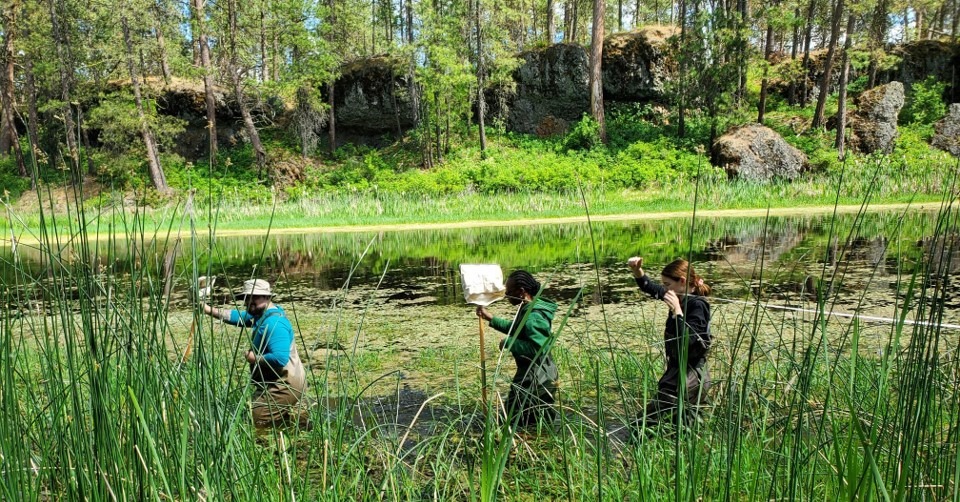
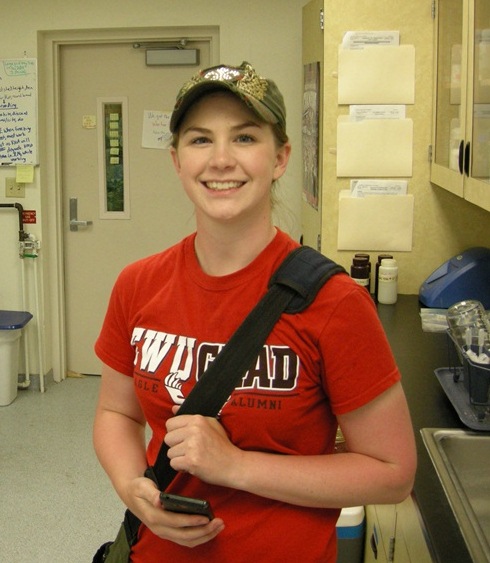
Jenae Yri (2014-2016) explored how the quality of wetlands at Turnbull are affected by the presence of non-native fish, particularly brook stickleback. One component of this work is testing whether fingernail clam reproductive success is different in wetlands containing invasive fish than in wetlands that (to our knowledge) have not been invaded.
Congrats on the grant from the NWSA!
Congratulations, Jenae, on your successful defense!
Congratulations on the new job!
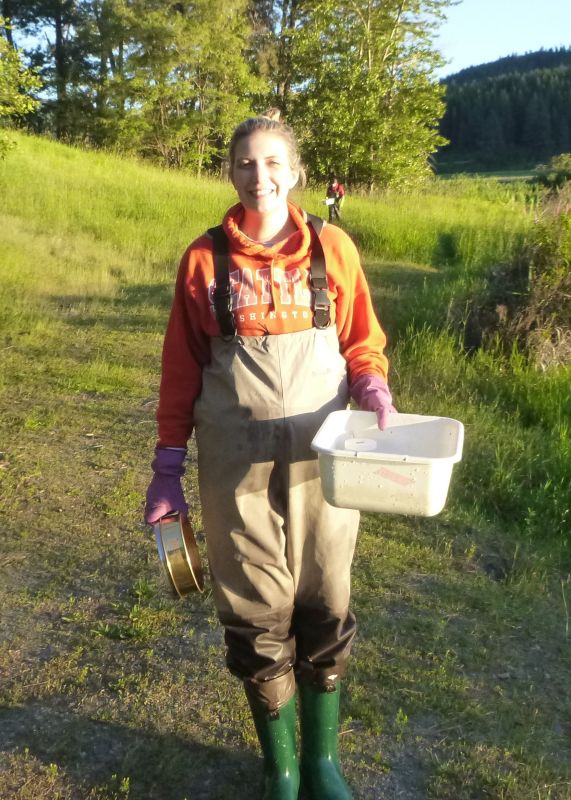
Jade Clinkenbeard (2018-2020) is exploring how different techniques of wetland restoration impact the aquatic plant and macroinvertebrate communities of wetlands in/around Turnbull National Wildlife Refuge. She is pictured here as a member of the Amphipod Angler Crew but did a wonderful job leading the Wetland Wranglers crew through two field seasons (2018 and 2019).
Congratulations, Jade, on your successful defense!
Congratulations on your new job!
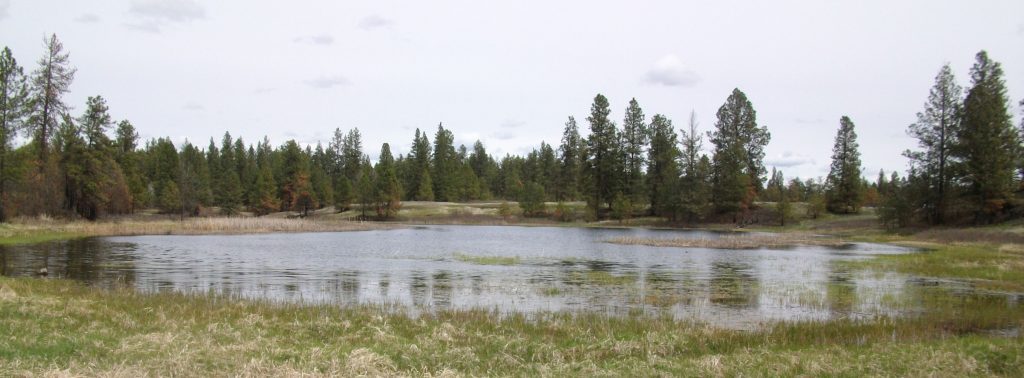
Trace metals and invertebrate physiology
We are exploring how the metal pollution from the Bunker Hill Superfund Site (Idaho) impacts aquatic invertebrates and their relationships with the microbial community. At this time, our work focuses on fingernail clams and amphipods that are present in eastern Washington and northern Idaho. We are interested in a number of questions, including how exposure to metals alters metabolic allocation and reproductive strategy. A portion of this work was funded by the Charlotte Martin Foundation.
Schoonover, CM, Wieker, J, Pope, R, Brown, C, Cooper, E, DeWitt, J, Gunselman, S, Jensen, C, Stevens, W, Yri, J, Nezat, C, Joyner-Matos, J. 2016. Development of functional trait biomarkers for trace metal exposure in freshwater clams (Musculium spp.). Comparative Biochemistry and Physiology, Part A. 200:21-34.
The awesome EWU Dungeon Crew runs the clam portions of this project.
The awesome EWU Amphipod Angler Crew runs the amphipod portions of this project.
The awesome EWU Clam and Microbe Crew is running the 2024 field season portion of this project.

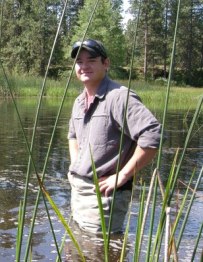
Cody Schoonover (2011-2013) conducted field and lab studies of local populations of fingernail clams (Musculium spp.) to test whether these clams can serve as biomonitors of water quality, particularly with respect to the metal-rich water downstream of the (now closed) mines in Idaho. You can see pictures of Cody in action on the Summer Internship Photos page!
Congratulations, Cody, on your successful defense!
Congratulations, Cody, on the awesome job!
Congratulations on the paper in CBP-A!
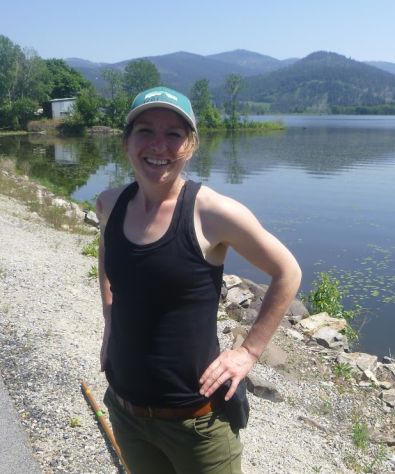
Chantilly Higbee (2015-2017) continued the study of how mining pollution in Idaho affects freshwater invertebrates. She ran one summer’s work with fingernail clams and now is focused on working with the amphipods that live in the chain lakes along the Coeur d’Alene River.
Congratulations, Chantilly, on being awarded the SETAC/EA Jeff Black Fellowship and presenting your work at the 2016 SETAC meeting!
Congratulations on your successful defense!
Congratulations on the new job!
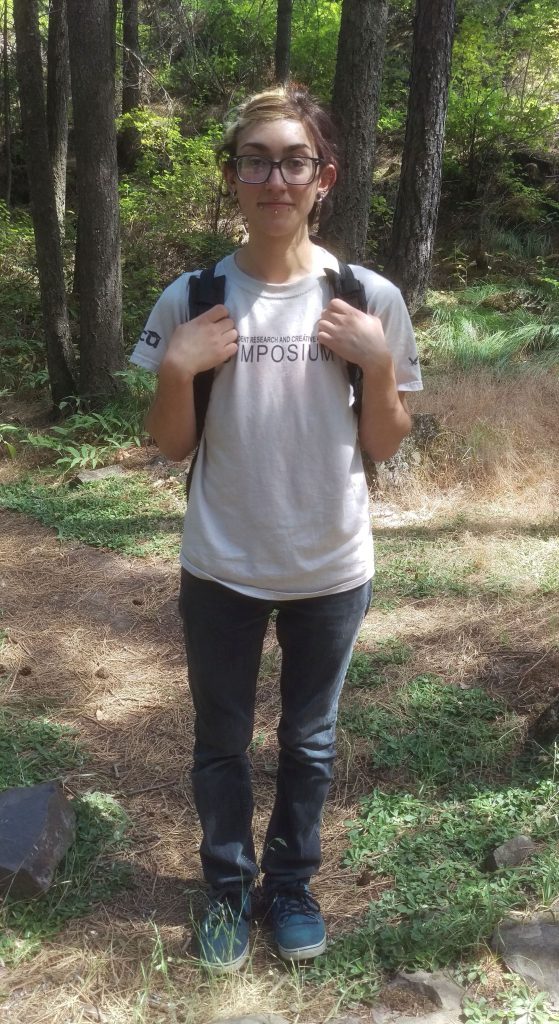
Dechen Edwards (2019-2021) will be studying how mining pollution affects the growth, reproduction, and microbiome of fingernail clams that live in the chain lakes along the Coeur d’Alene River in Idaho.
Congratulations on your successful defense!
Good luck in your doctoral program with Professor Heather Proctor at the University of Alberta!!

Emily Hamada (2023-2025) is following-up on Dechen’s work, expanding our study of how mining pollution affects the growth, reproduction, and microbiome of fingernail clams that live in several lateral lakes of the Coeur d’Alene River in Idaho. Emily is co-advised by Dr. Bo Idsardi, with whom she continues to explore her interests in the factors that impact the success of STEM teachers in the K-12 system.
Congratulations on your successful defense!
Congratulations on your new position as a middle school science teacher! Talk to them about clams!
Ecological processes – environmental effects on clam reproduction
Much of this work falls under the heading of “ecological physiology,” in which physiological tools are used to examine how environmental variables affect invertebrate reproduction and survival and therefore impact distribution and abundance. To date, all of this work has been done in aquatic habitats, which have multiple abiotic variables, including low dissolved O2availability (hypoxia), elevated dissolved O2 availability (hyperoxia), hydrogen sulfide, and thermal and salinity fluctuations.
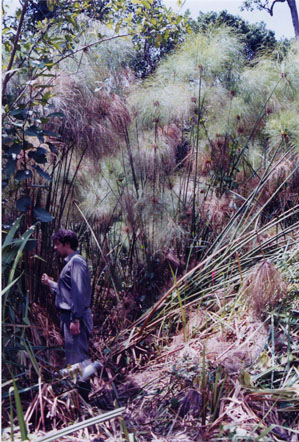
The dissolved O2 availability studies combine local field work at Turnbull National Wildlife Refuge with work at Kibale National Park, Uganda. This work was done in collaboration with Lauren Chapman (McGill University).
During my doctoral studies, we tested whether the magnitude of the oxidative stress response reflects position along a stressful environmental gradient. A papyrus swamp/stream system in Kibale has a natural dissolved O2 gradient ranging from extreme hypoxia to normoxia. The standard expectation is that organisms require normoxia and must employ strategies to tolerate hypoxia. Surprisingly, small clams belonging to the genus Sphaerium live in extreme hypoxia in the papyrus swamp, with only a small proportion experiencing elevated O2 conditions at the extreme distribution edge and none experiencing normoxia (in the stream). It is very unusual to find an invertebrate that does not experience normoxia at any time during its life cycle. We have found that clams living in hypoxia have more robust stress responses, less cellular damage, and higher reproductive success than do clams in more oxygenated water. These studies support the rapidly developing idea that normoxia is not as beneficial as we once thought.
Joyner-Matos, J, Chapman, LJ, Downs, CA, Hofer, T, Leeuwenburgh, C, and Julian, D. 2007. Stress response of an African freshwater clam along a natural abiotic gradient: Too much oxygen can be a limiting factor in aquatic environments. Functional Ecology. 21:344-355.
Joyner-Matos, J, Richardson, H, Sammeli, T, and Chapman, LJ. 2011. A fingernail clam (Sphaerium sp.) shows higher reproductive success in hypoxic waters. Canadian Journal of Zoology. 89:161-168.
Joyner-Matos, J and Chapmman, LJ. 2013. Persisting in papyrus: Size, oxidative stress, and fitness in freshwater organisms adapted to sustained hypoxia. (Review article) Comparative Biochemistry and Physiology, Part A. 165:405-416.
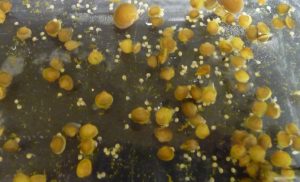
I collaborated with Yulia Bespalaya, of the Russian Academy of Sciences and Northern (Arctic) Federal University to explore how populations of a fingernail clam differ in three types of Arctic lakes. Yulia and her colleagues completed the field work and I assisted with interpreting the results. I hope that this international collaboration can continue!
Bespalaya, Y, Joyner-Matos, J, Bolotov, I, Aksenova, O, Gofarov, M, Sokolova, S, Shevchenko, A, Travina, O, Zubriy, N, Aksenov, A, Kosheleva, A, and Ovchinnikov, D. 2019. Reproductive ecology of Pisidium casertanum (Poli, 1791) (Bivalvia: Sphaeriidae) in Arctic lakes. Journal of Molluscan Studies. 85:11-23.
Evolutionary processes
This work combines physiology with the techniques of evolutionary genetics. Deleterious mutations play a central role in evolution, agriculture, cancer and aging. Build-up of deleterious mutations may result in an intrinsic physiological stress, causing a positive feedback loop of mutation accumulation. Free radicals, which are endogenously produced by most cells, are atoms or molecules that contain unpaired electrons. They are reactive and can cause oxidative damage to nucleic acids. Elevated free radical production may be mechanistically linked to mutation. We are exploring whether there is a relationship between between germline mutation and free radical metabolism using the Caenorhabditis model system (pictured below). This research was started at the University of Florida with Charles Baer.
The awesome EWU Worm Wrangling Crew ran these projects.
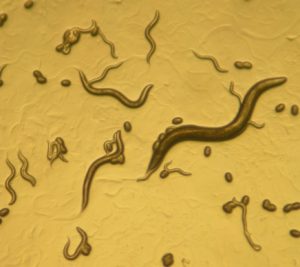
Joyner-Matos, J, Bean, LC, Richardson, H, Sammeli, T, and Baer, CF. 2011. No evidence of elevated germline mutation accumulation under oxidative stress in Caenorhabditis elegans. Genetics. 189:1439-1447.
Joyner-Matos, J, Hicks, KA, Cousins, D, Keller, M, Denver, DR, Baer, CF, and Estes, S. 2013. Evolution of a higher intracellular oxidizing environment in Caenorhabditis elegans under relaxed selection. PLOS ONE. 8:e65604.
Andrew, JR, Dossey, MM, Garza, VO, Keller-Pearson, M, Baer, CF, and Joyner-Matos, J. 2015. Abiotic stress does not magnify the deleterious effects of spontaneous mutations. Heredity. 115:503-508.
Rajaei, M., Saxena, A.S., Johnson, L.M., Snyder, M.C., Crombie, T.A., Tanny, R.E., Andersen, E.C., Joyner-Matos, J., Baer, C.F. 2021. Mutability of mononucleotide repeats, not oxidative stress, explains the discrepancy between laboratory-accumulated mutations and the natural allele-frequency spectrum in C. elegans. Genome Research. 31:1602-1613.
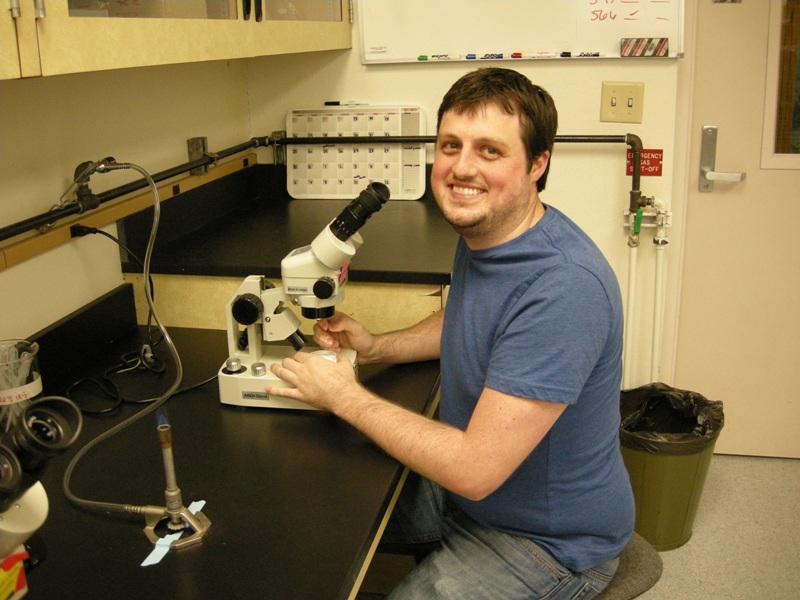
Jacob Andrew (2010 – 2012) tested whether aspects of physiological condition, particularly susceptibility to environmental stress, can reflect genome condition.
Congratulations, Jacob, on your Sigma Xi grant!
Congratulations, Jacob, on your successful defense!
Congratulations on earning a Ph.D. from UC Riverside!
Congratulations on the paper in the December 2015 volume of Heredity!

Melody Dossey (2012 – 2014) is pictured here picking worms for our summer 2012 fitness assay. Her thesis work tested whether the average mutation effect sizes differs between MA lines with ‘typical’ steady-state free radical metabolism and those with elevated stress.
Melody also became the queen of Western Blots as she tested the cellular-level responses to heavy metal pollution in the clams from Cody’s experiments (see below).
Congratulations, Melody, on your successful defense!
Congratulations on your new job!
Funding (EWU)
2024 Faculty Grant for Research and Creative Works, EWU, “Do clams need help from microbe partners to be able to survive in mining-polluted waters?”
2021 Board of Trustees Diversity Initiative, EWU, “Listening to the students: Exploring attitudes towards CSTEM majors amongst diverse student groups.” Equal Principal Applicant with Dr. Robert (Bo) Idsardi.
2018 Faculty Grant for Research and Creative Works, EWU, “An evaluation of the aquatic plant and invertebrate communities in local wetland restoration projects.”
2015 Faculty Grant for Research and Creative Works, EWU, “The effects of heavy metal pollution on the survival, reproduction, activity and metabolomic profiles of freshwater clams.”
2014 Faculty Grant for Research and Creative Works, EWU, “Trade-offs between activity, reproduction and survival in freshwater clams exposed to heavy metal pollution from the Coeur d’Alene drainage.”
2012 Charlotte Martin Foundation, “Summer research internship for high school students: Environmental quality in the Inland Northwest.” Matching funds provided by EWU’s College of Science, Health and Engineering and EWU’s Office of Grant and Research Development.
2011 Faculty Grant for Research and Creative Works, EWU, “Comparison of mutation effect sizes in rhabditid nematodes with elevated or normal free radical production.”
2011 EWU Foundation Start Something Big grant, “A test of whether the heat shock protein response correlates with fitness in nematode worms.”
2009 Faculty Grant for Research and Creative Works, EWU, “The effects of free radical metabolism on heritable mutation.”
2009 EWU Foundation Start Something Big grant, “DNA damage and mutation in rhabditid nematodes.”
2008 Faculty Grant for Research and Creative Works, EWU, “Is there differential reproductive success along a dissolved O2gradient?”
